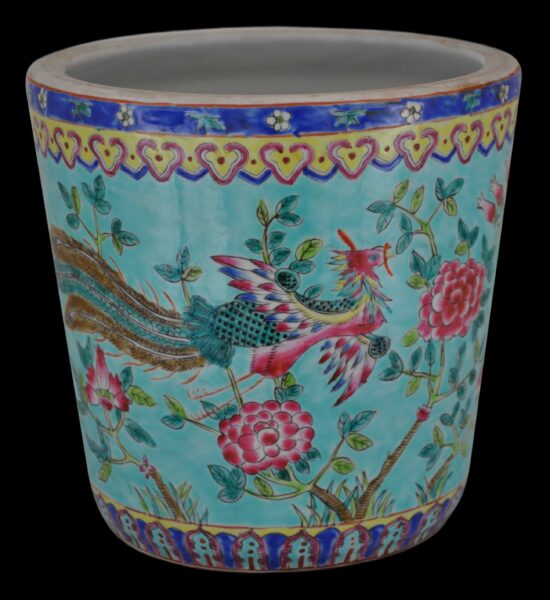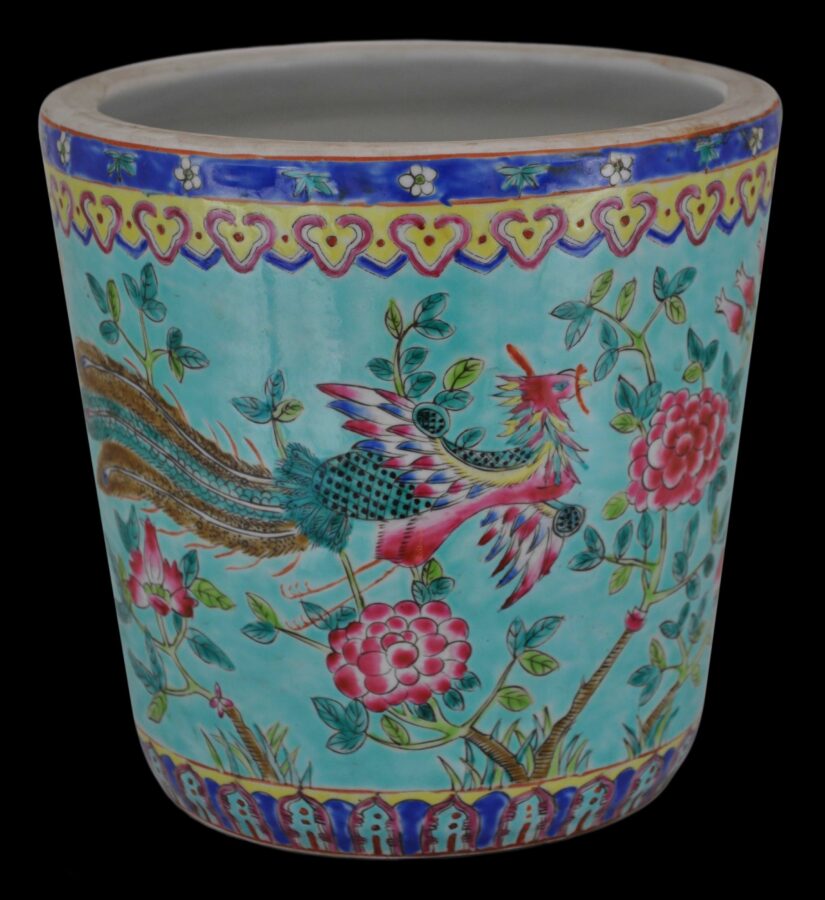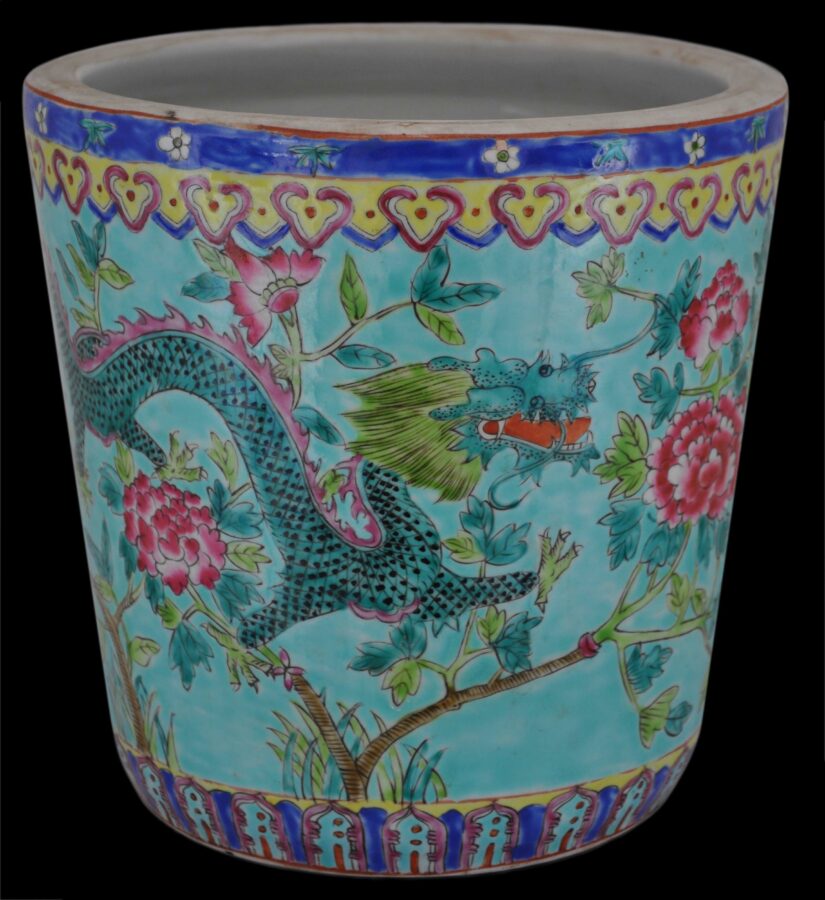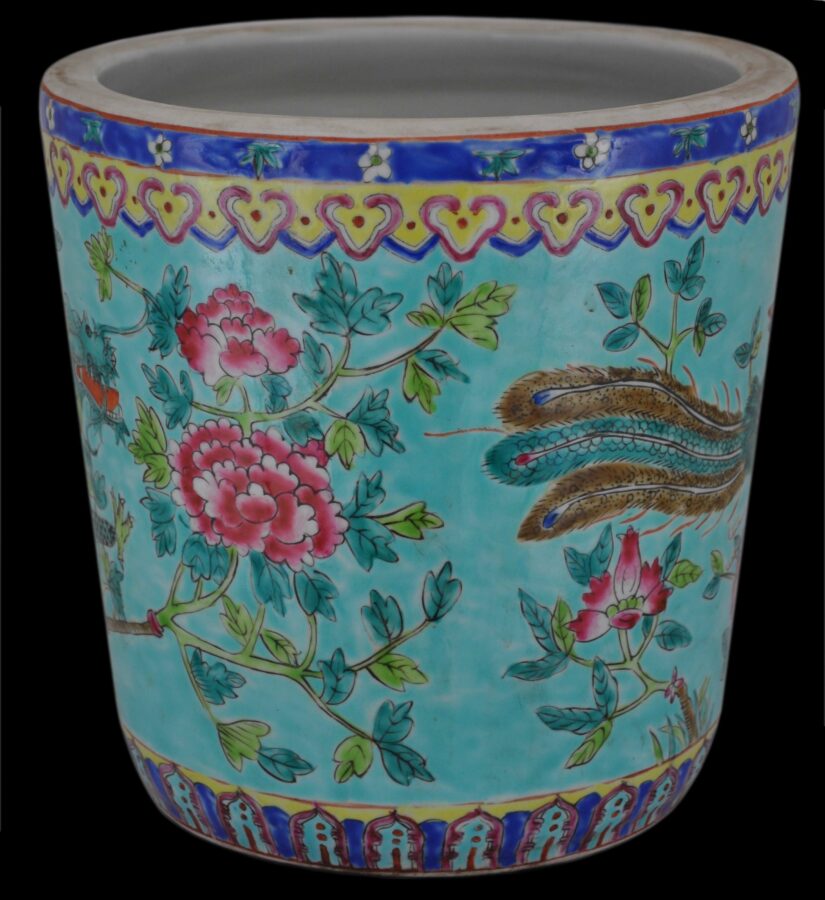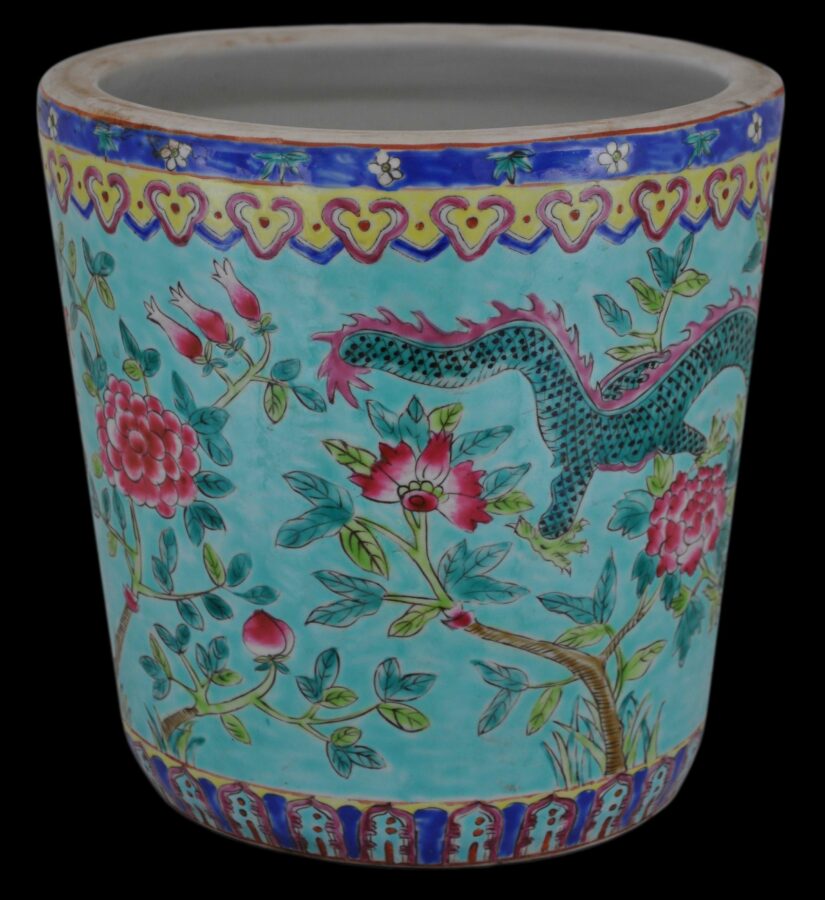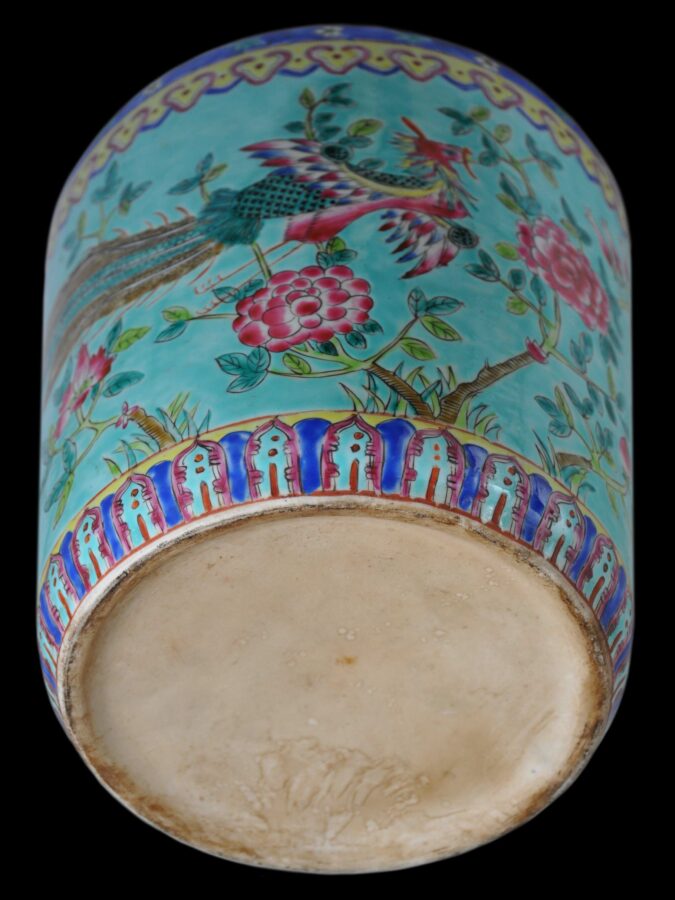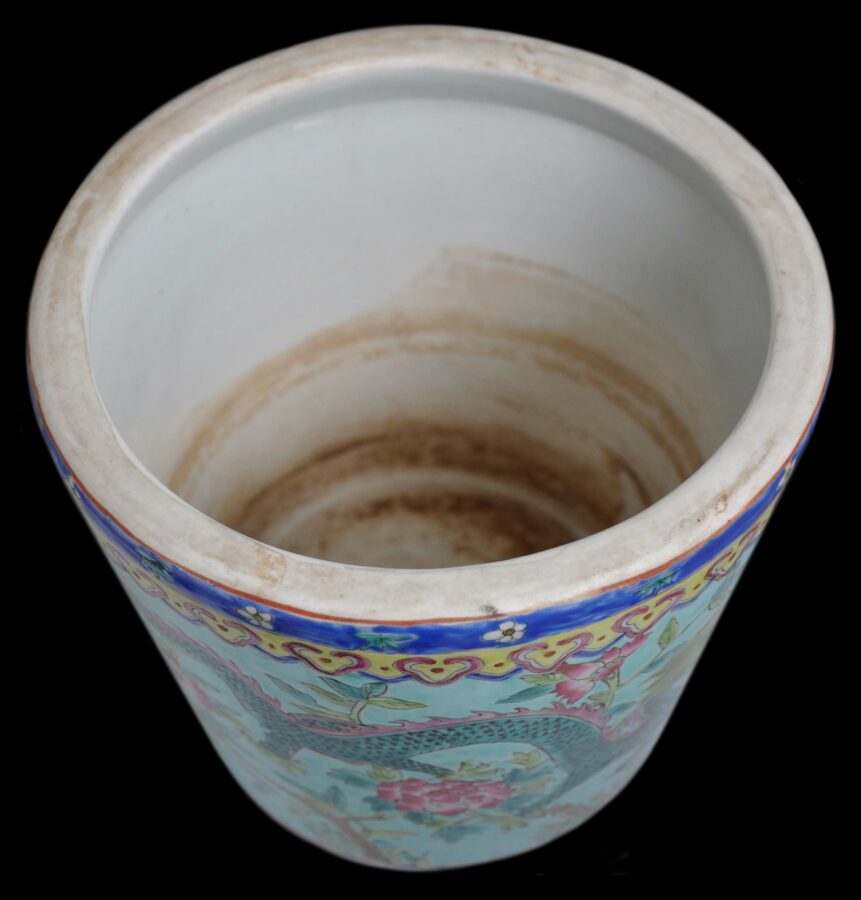This thickly-potted porcelain vase is glazed with a phoenix on one side and a dragon on the other, between borders of colourful, petal-shaped lapets, all against a turquoise ground.
The bright colouring, the use of a phoenix, and the turquoise ground unadorned by Indian lotus scrolling are all typical of Straits Chinese porcelain or nonyaware. However, the use of a dragon is not typical.
This vessel might have functioned either as a jardiniere for the display of a houseplant or was filled with sand and was a censor in which incense sticks were inserted and lit. The shape is not quite conventional for a typical Straits Chinese censor however.
In traditional Chinese culture, a phoenix and a dragon symbolised a married couple. But in Straits Chinese porcelain, more typically only a phoenix was used.
It is said sometimes that the Straits Chinese did not understand the significance of the dragon because they had become too divorced from traditional Chinese ways and had gone off on their own cultural tangent. But this is impossible. All the Straits Chinese communities were co-located with Chinese who were newly arrived from China, the so-called sinkeh, and the Straits Chinese would hardly have been ignorant of other traditional Chinese motifs in the presence of the migratory onslaught facilitated by the British colonisers whereby hundreds of thousands of southern Chinese poured into the Malay Peninsula in the second half of the 19th century and the early 20th century.
On balance, probably this jardiniere is from a Straits Chinese house originally, but the use of a dragon is not typical. Ho (1983, p. 100) illustrates a colourful baluster vase adorned with dragons which appears to be in the same category – used by a Straits family but not in strict accordance with the confines that we have retrospectively put around Straits tastes, which in any event had some central themes but which also were eclectic.
The jardiniere is in excellent condition and is without cracks, chips or repairs. There is some water-staining inside from having been used in the past to display a potted houseplant.
References
Ho, W.M., Straits Chinese Porcelain: A Collector’s Guide, Times Books International, 1983.
Kee, M.Y., Straits Chinese Porcelain, Kee Ming Yuet Sdn Bhd, 2004.
Kee, M.Y., Peranakan Chinese Porcelain: Vibrant Festive Ware of the Straits Chinese, Tuttle Publishing, 2009.
Khoo, J.E., The Straits Chinese: A Cultural History, The Pepin Press, 1996.


